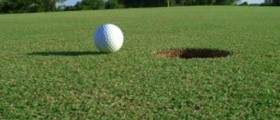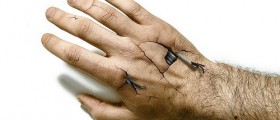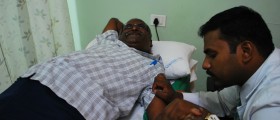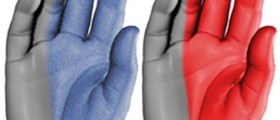Lateral epicondylitis is relatively common condition also known under the name tennis elbow. Some people have heard about this condition under some other names, including shooter's elbow and archer's elbow, but all these names refer to the same situation in which the outer part of the elbow starts to feel sore and very tender. Lateral epicondylitis is most commonly observed in people who use to play tennis and other racquet sports, even though the injury of the outer elbow can happen to anyone. Generally speaking, lateral epicondylitis is an overuse injury that occurs on the lateral side of the elbow region. It occurs at common extensor tendon that originates from the lateral epicondyle.
Signs and symptoms of lateral epicondylitis
Lateral epicondylitis is usually characterized by pain affecting the outer part of the elbow. A part of the bone on the outside of the elbow, lateral epicondyle, may feel very tender and painful especially on touch. In most cases, normal daily activities will become much harder since people experience pain on gripping and movements of the wrist. Lifting movements are also associated with pain. In general, any kind of activity that requires the muscles that extend the wrist are painful. The stiffness and pain are especially pronounced in the morning. In some cases the pain may radiate from the elbow to the forearm and wrist.
Causes of lateral epicondylitis
For a long time, scientists believed that lateral epicondylitis occurs almost exclusively as a result of overexertion. This was due to the fact it mostly affects those who used the same repetitive motion for many years. The tennis elbow is also very common in patients who performed motions they were unaccustomed to, and great majority of patients have problems only with the right arm, which is typically used for many daily activities.
Modern investigations have shown that lateral epicondylitis also results from trauma (direct blows to the epicondyle), a sudden and vigorous pull, or forceful extension. Most probably, the tennis elbow occurs due to the tears between the common extensor tendon and the periosteum of the lateral humeral epicondyle. Certain people are at increased risk of lateral epicondylitis. The high risk group includes people with underlying conditions such as calcification of the rotator cuff, bicipital tendinitis, or carpal tunnel syndrome.
However, this condition can be prevented by decreasing the amount of playing or working time that involves repetitive movements of the arm. People should also strengthen the muscles of the forearm and try to stay in overall good physical shape.

















Your thoughts on this
Loading...